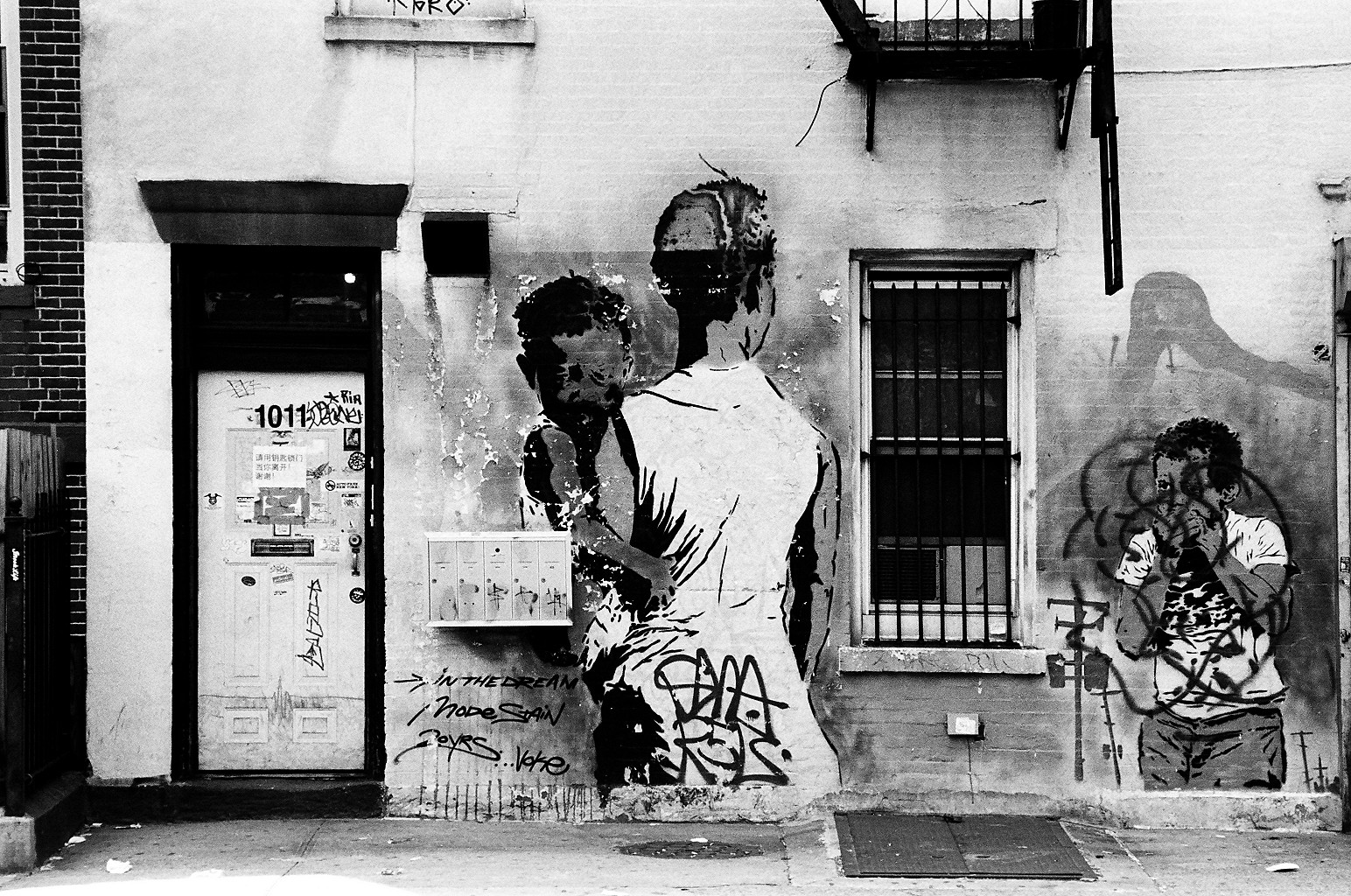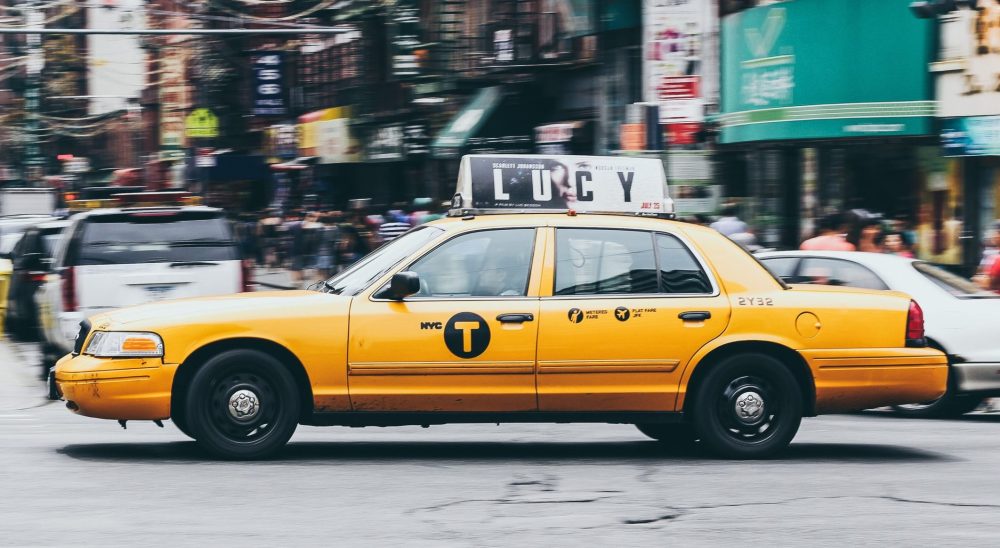Books & Culture
When Gentrification Comes to a Boil

Brian Platzer and Anna Altman talk displacement, dehumanized policing, and writing about the changing neighborhoods of NYC


Brian Platzer’s debut novel, Bed-Stuy is Burning, offers a portrait of racial tension in contemporary Brooklyn. The bulk of the novel unspools over the course of one eventful day, when resentment over gentrification, white privilege, and police brutality erupt into sudden violence. The novel is told in the round, by a sequence of individual voices that come together to form a chorus. It’s a novel about the individuals that comprise a community, whether chosen or not, and the internal lives they carry with them.
Anna Altman: Bed-Stuy Is Burning draws from current events, namely the increased attention to police shootings of young black men (often unarmed) and the civil unrest such incidents have provoked. It takes some courage to write a novel with a plot that is ripped from the news, especially concerning an issue with such racial tension at its core. What is it like to tackle such a pressing and contentious issue?
Brian Platzer: I actually began writing the novel seven or eight years ago, when most days I began my commute into Manhattan by watching kids not much older than my eighth grade students handcuffed and pressed against the subway grate that separates the stairs up to the street from those down to the track. Though there are reasonable arguments on both sides concerning the effectiveness of stop and frisk in limiting guns and violent crime, the lived experience of it was miserable for everyone involved. The kids seemed mortified, the police officers appeared stoic behind masks of brutal professionalism, and we commuters were impotent to help in any way, though these stops were presumably made on our behalf. I couldn’t get it out of my head that if tensions ratcheted up a bit — if a police officer lost control and shot one of these kids, for example — violence would be the logical outcome. I was writing second and third drafts during the fury and rioting in Cleveland, Baltimore, and outside St. Louis. These events made me feel it was an even more worthwhile goal to explore how members of my community — from newcomers to longtime residents — experience such seismic changes. I wanted to learn more about the individuals at the center of these complicated conflicts.
“I couldn’t get it out of my head that if tensions ratcheted up a bit — if a police officer lost control and shot one of these kids, for example — violence would be the logical outcome.”
AA: You even go ahead and try to imagine the interior life of Police Commissioner William Bratton. How did you try to get inside his mind? What was it like to write the interior life of a public figure?
BP: As soon as I expanded the scope of the novel to include a wide spectrum of perspectives and voices, I felt compelled to include someone at the very top who was pulling many of the strings that manipulated my characters. I was fascinated by the idea that the man who replaced stop and frisk with the broken windows model of policing, who is generally applauded as a successful keeper of both the peace and the community, was the same man who discussed crime in a clinical way almost entirely stripped of humanity. His autobiography provides a back story and some rationale behind his professional inclinations, but after I watched many, many hours of his speeches on YouTube, what stood out most was his desire to talk about policing as though it’s an algorithm where if one processes every incident of crime and tries to police those areas of incident with extra scrutiny — “putting cops on the dots” in his language — the human part would take care of itself. I was fascinated by the tension between the people whose story I was telling and the man at the top who tries, for what is probably a good reason in his opinion, to dehumanize the process. At that point, the decision was whether to fictionalize him and give Bratton a new name while retaining most of his same characteristics or to do my best to imagine his internal life. I felt the latter would be less distracting for the reader. My novel takes place in a real park in a real neighborhood and refers to real subway stations, restaurants, housing projects, banks, hospitals, music, and celebrities. Bratton, who first appears in the novel as a voice on the radio, is just another representative of the real world in which my fictional characters live.
AA: Your rendering of the erupting violence makes for some of the most interesting scenes in the book: you manage to convey the growing feeling of chaos and unrest from the perspective of each individual, but there isn’t a sense of how things are moving as a whole. You never fully spell out for the reader the chain of events. How did you decide when to fade to black?
BP: My goal was to retain the power of causality while depicting the natural confusion and uncertainty that accompanies moments of sudden and unexpected violence. It was important to me that no event feel random: that each action in the novel leads inevitably to the next one. At the same time, I didn’t want to suggest that all the participants were fully aware of such causality. When Aaron and his family move in as the only non-African Americans on a beautiful Bed-Stuy block, he sees the move as a step in a new direction and towards a new life. But he is not fully aware of the consequences that the gentrifiers en masse create, such as displacement, increased policing, and community anger. These tensions lead to violence, which comes back to focus on Aaron’s family. Though Aaron is an important part of a chain of events, he is still surprised to find himself the target of his neighbors’ anger.
From His Corner, A Bodega Owner Watches Brooklyn Change
AA: As the book progresses and tension rises, your characters maintain their introspective stream-of-consciousness monologues. Dramatic moments unfold as characters are thinking back to earlier losses and regrets. What does it mean that your characters drift off into reveries even in dramatic moments?
BP: It’s always a tough line to walk between advancing the plot and depicting a character’s inner life. What you rightly refer to as “introspective stream-of-consciousness” was my best attempt to approach what it is to be a person with thoughts, yearnings, and memories who is currently experiencing a heightened moment of fear or violence. Although it would be unlikely that Antoinette, for example, literally spends time recalling her history growing up in Jamaica as she is taping up windows to protect the house from potential intruders, it is likely that for her, the moment is filtered through a prism of other experiences with violence. In real life, these moments of tension might be colored by flash-recollections or instincts. In the novel, I wanted to make sure that the reader understood the full weight of these memories. After three or four drafts, I felt I had the balance right between keeping the story moving and making the characters real.
AA: One of the characters, Aaron, struggles with a gambling addiction that, in the past, has cost him dearly. This serves as a barrier between Aaron and his wife’s ability to establish a trusting relationship and proves to be a daily struggle for Aaron. What was your interest in looking more closely at addiction? Why gambling? How does addiction transform relationships?
BP: I’m fascinated by gambling because the propensity to take risks is as often viewed as a positive trait as it is a negative one. Some of the same proclivities that get Aaron fired from his career as a rabbi are those that help him succeed on Wall Street. I used his background of gambling to highlight the gentrifier’s mindset. When a survey was done of the original Brooklyn gentrifiers in 1969, they described themselves as “adventurous” in the same way Aaron sees himself. Although he’s trying not to bet as often or as much as he used to, Aaron sees his entire life as a gamble now. He’s put all his financial resources into a house that he hopes will appreciate in value, and he has the (unappealing) tendency to see his neighbors as if not dangerous then at least exotic. I also wanted to take advantage of the instability inherent in the life of an addict of any kind and those who love him. Aaron wants to marry Amelia, but he can’t promise her that he’ll be able to control his addiction. This tension is a dramatized version of what a lot of people feel on the precipice of marriage — that they want the other person to promise a happy life for them even though they know that such a guarantee would be insincere. Finally, I wanted to present a counterpoint in Aaron’s personality to his loss of faith. As a rabbi, he could no longer believe in God, so he finds something else he can believe in: math, probability, and chance.
“I’m fascinated by gambling because the propensity to take risks is as often viewed as a positive trait as it is a negative one.”
AA: Religion plays a central role in the book: the couple’s nanny, Antoinette, is very religious; in fact, she attends weekly church and mosque services and has recently started to wear a hijab. One half of the central couple, Aaron, worked for years as a rabbi but now claims to have lost his faith. How do issues of religion run under the surface of a story about racial inequality or police violence? There’s a particular scene, too, where speaking about religion seems to dissolve barriers to communication. What comfort or community can religion provide us in those moments? How does religion create common ground or keep us apart?
BP: No one in the novel is comfortable with his or her own religious faith. Aaron struggles to retain faith as a rabbi in a world where God could allow such suffering; Antoinette originally turns to Christianity for community and an escape from a previous life, and then she transitions to Islam after Christianity isn’t satisfying enough; and Amelia thinks of religion as a way to articulate what differentiates human beings from animals, describing God as something like a synonym for “consciousness,” and yet she is the one who believes she encounters God in a pivotal moment in the novel. Brooklyn was long ago nicknamed the Borough of Churches, and though many houses of worship recently have been bought out by developers, when I walk around my Bed-Stuy neighborhood on a Sunday, it’s clear how significant a role the church plays in the lives of so many who live here. Consequently, when Aaron employs his religious tools in an attempt to assuage the crowd’s anger, it’s a complicated moment of a rabbi who is uncertain about his faith manipulating the faith of others in order to save himself and his family. It’s both a deeply cynical moment and one grounded in his love for his family and his history as a religious leader. Religion is both a political tool and a personal salve, and I try to present it with all its power and ambiguity.









